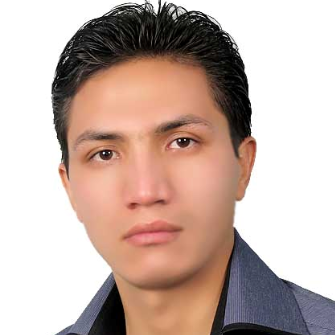International Journal of Information Technology and Computer Science (IJITCS)
IJITCS Vol. 7, No. 1, 8 Dec. 2014
Cover page and Table of Contents: PDF (size: 558KB)
Video Quality Analysis of Distributed Video Coding in Wireless Multimedia Sensor Networks
Full Text (PDF, 558KB), PP.12-20
Views: 0 Downloads: 0
Author(s)
Index Terms
Multimedia communications, Wireless Multimedia Sensor Networks, Distributed Video Coding
Abstract
Multimedia communications in wireless sensor networks is a very challenging task. Video coding with high computational complexity and great contribution to the energy consumption of nodes and video transmission over erroneous wireless channel are the main reasons of these challenges. Distributed Video Coding has high potential for being deployed in these networks due to its unique features like as independent frame coding and low complexity encoding operations. The purpose of this study is to understand and evaluate the distributed video coding performance facing the transmission characteristics in wireless multimedia sensor networks. To this end, the comparative analysis of the coding in respect of main factors of video transmission (i.e., bit rate and error resiliency) in the Wireless Multimedia Sensor Networks (WMSN) has been done. We have used both the objective and subjective criteria for checking the video quality and applied the Gilbert-Elliot channel model for capturing the bit-level error in WMSN. Therefore, unlike previous works, our results are more realistic. In addition, based on this model we have investigated the impact of protection of frames by Reed-Solomon error control scheme. The results show that paying attention to coding parameters and protecting key frames, have a great impact on increasing the quality of the receiving video and will reduce the energy consumption and delays due to low number of requests from the feedback channel.
Cite This Paper
Mortaza Nikzad, Ali Bohlooli, Kamal Jamshidi, "Video Quality Analysis of Distributed Video Coding in Wireless Multimedia Sensor Networks", International Journal of Information Technology and Computer Science(IJITCS), vol.7, no.1, pp.12-20, 2015. DOI:10.5815/ijitcs.2015.01.02
Reference
[1]I. F. Akyildiz, T. Melodia, and K. R. Chowdury, "Wireless multimedia sensor networks: A survey," Wireless Communications, IEEE, vol. 14, pp. 32-39, 2007.
[2]I. F. Akyildiz, T. Melodia, and K. Chowdhury, “Wireless multimedia sensor networks: Applications and testbeds,” Proc. IEEE, vol. 96, no. 10, pp.1588–1605, October 2008.
[3]F. Falah, L. Suriani Affendey,"Systematic Review and Classification on Video Surveillance Systems", IJITCS, vol.5, no.7, pp.87-102, 2013.
[4]B. Girod, A. M. Aaron, S. Rane, and D. Rebollo-Monedero, "Distributed Video Coding," Proceedings of the IEEE, vol. 93, pp. 71-83, 2005.
[5]R. Puri, A. Majumdar, P. Ishwar, K. Ramchandran, “Distributed video coding in wireless sensor networks,” IEEE Signal Proc. Magazine, vol. 23, pp. 94-106, 2006.
[6]V. K. Kodavalla and P. G. K. Mohan, "Multi-view distributed video coding," in Devices, Circuits and Systems (ICDCS), 2012 International Conference on, 2012, pp. 614-618.
[7]L. Van Hoesel, T. Nieberg, W. Jian, and P. J. M. Havinga, "Prolonging the lifetime of wireless sensor networks by cross-layer interaction," Wireless Communications, IEEE, vol. 11, pp. 78-86, 2004.
[8]J. J. Ahmad, H. A. Khan, and S. A. Khayam, "Energy efficient video compression for wireless sensor networks," in Information Sciences and Systems, 2009. CISS 2009. 43rd Annual Conference on, 2009, pp. 629-634.
[9]D. Slepian and J. K. Wolf, "Noiseless coding of correlated information sources," Information Theory, IEEE Transactions on, vol. 19, pp. 471-480, 1973.
[10]A. D. Wyner and J. Ziv, "The rate-distortion function for source coding with side information at the decoder," Information Theory, IEEE Transactions on, vol. 22, pp. 1-10, 1976.
[11]C.Tonoli, M.Migliorati, and R.Leonardi, “ Error resilience performance evalution of a distributed video codec, ” in Proceedings of the International Picture Coding Symposium (PCS ’07), vol. 6, pp. 14445–14451, Lisbon, Portugal, November 2007.
[12]A. Aaron, R. Zhang, and B. Girod, “Wyner-Ziv coding for motion video,” in Proceedings of the 36th Asilomar Conference on Signals, Systems and Computers, Pacific Grove, Calif, USA, November 2002
[13]A. Aaron, S. D. Rane, E. Setton, and B. Girod, “Transform domain Wyner-Ziv codec for video,” in Visual Communications and Image Processing, vol. 5308 of Proceedings of SPIE, pp. 520–528, San Jose, Calif ,USA, January 2004.
[14]R. Puri and K. Ramchandran, “PRISM: a new robust video coding architecture based on distributed compression principles,” in Proceedings of the 40th Allerton Conference on Communication, Control and Computing, Allerton, Ill, USA, October 2002.
[15]R. Puri and K. Ramchandran, “PRISM: a new “reversed” multimedia coding paradigm,” in Proceedings of International Conference on Image Processing (ICIP ’03), vol. 1, pp. 617–620, Barcelona, Spain, September 2003.
[16]G. A. Shah, L. Weifa, and O. B. Akan, "Cross-Layer Framework for QoS Support in Wireless Multimedia Sensor Networks," IEEE Transactions on Multimedia, vol. 14, pp. 1442-1455, 2012.
[17]X. Artigas, J. Ascenso, M. Dalai, S. Klomp, D. Kubasov, and M. Ouaret, “The DISCOVER codec: architecture, techniques and evaluation,” in Proceedings of the International Picture Coding Symposium (PCS ’07), vol. 6, pp. 14496–14410, Lisbon, Portugal, November 2007.
[18]M. Roshanzadeh,S. Saqaeeyan,"Error Detection & Correction in Wireless Sensor Networks By Using Residue Number Systems", IJCNIS, vol.4, no.2, pp.29-35, 2012
[19]M. Mushkin and I. Bar-David, "Capacity and coding for the gilbert-elliott channels," Information Theory, IEEE Transactions on, vol. 35, pp. 1277-1290, 1989.
[20]W. Hong-Shen and C. Pao-Chi, "On verifying the first-order Markovian assumption for a Rayleigh fading channel model," Vehicular Technology, IEEE Transactions on, vol. 45, pp. 353-357, 1996.
[21]K. L. Blackard, T. S. Rappaport, and C. W. Bostian, "Radio frequency noise measurements and models for indoor wireless communications at 918 MHz, 2.44 GHz, and 4.0 GHz," in Communications, 1991. ICC '91, Conference Record. IEEE International Conference on, 1991, pp. 28-32 vol.1.
[22]M. Y. Naderi, H. R. Rabiee, M. Khansari, and M. Salehi, "Error control for multimedia communications in wireless sensor networks: A comparative performance analysis," Ad Hoc Networks, vol. 10, pp. 1028-1042, 2012.
[23]J. Pierre Ebert and A. Willig, “A Gilbert-Elliot Error Model and the Efficient Use in Packet Level Simulation,” Technical University Berlin, TKN Technical Report, TKN-99-002, March 1999.
[24]D. Duchamp and N. F. Reynolds, "Measured performance of a wireless LAN," in Local Computer Networks, 1992. Proceedings., 17th Conference on, 1992, pp. 494-499.
[25]UC Berkeley, LBL, USC/ISI and Xerox PARC, The Network Simulator ns-2, The VINT Project.[Online] Available: http://www.isi.edu/nsnam/ns/.
[26]C. Ke, C. Shieh, W. Hwang, and A. Ziviani, “An evaluation framework for more realistic simulations of MPEG video transmission,” J. Inf. Sci. Eng., vol. 440, no. 2, pp. 425–440, 2008.
[27]I. Akyildiz and M. Vuran, “Wireless Sensor Networks,” John Wiley & Sons,2010.
[28]C. Perkins, E.M. Belding-Royer, S. Das, Ad hoc on demand distance vector (aodv) routing, IETF RFC 3561, 2003.
[29]L. Van Hoesel, T. Nieberg, W. Jian, and P. J. M. Havinga, "Prolonging the lifetime of wireless sensor networks by cross-layer interaction," Wireless Communications, IEEE, vol. 11, pp. 78-86, 2004.
[30]S. Lin, D.J. Costello, Error Control Coding: Fundamentals and Applications, Prentice Hall, 1983.


